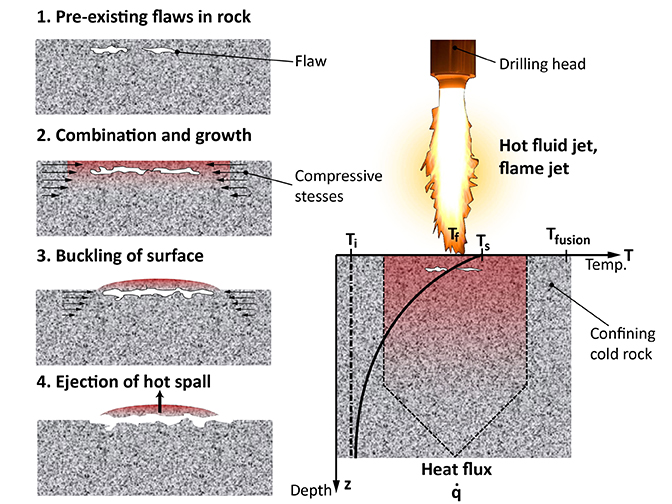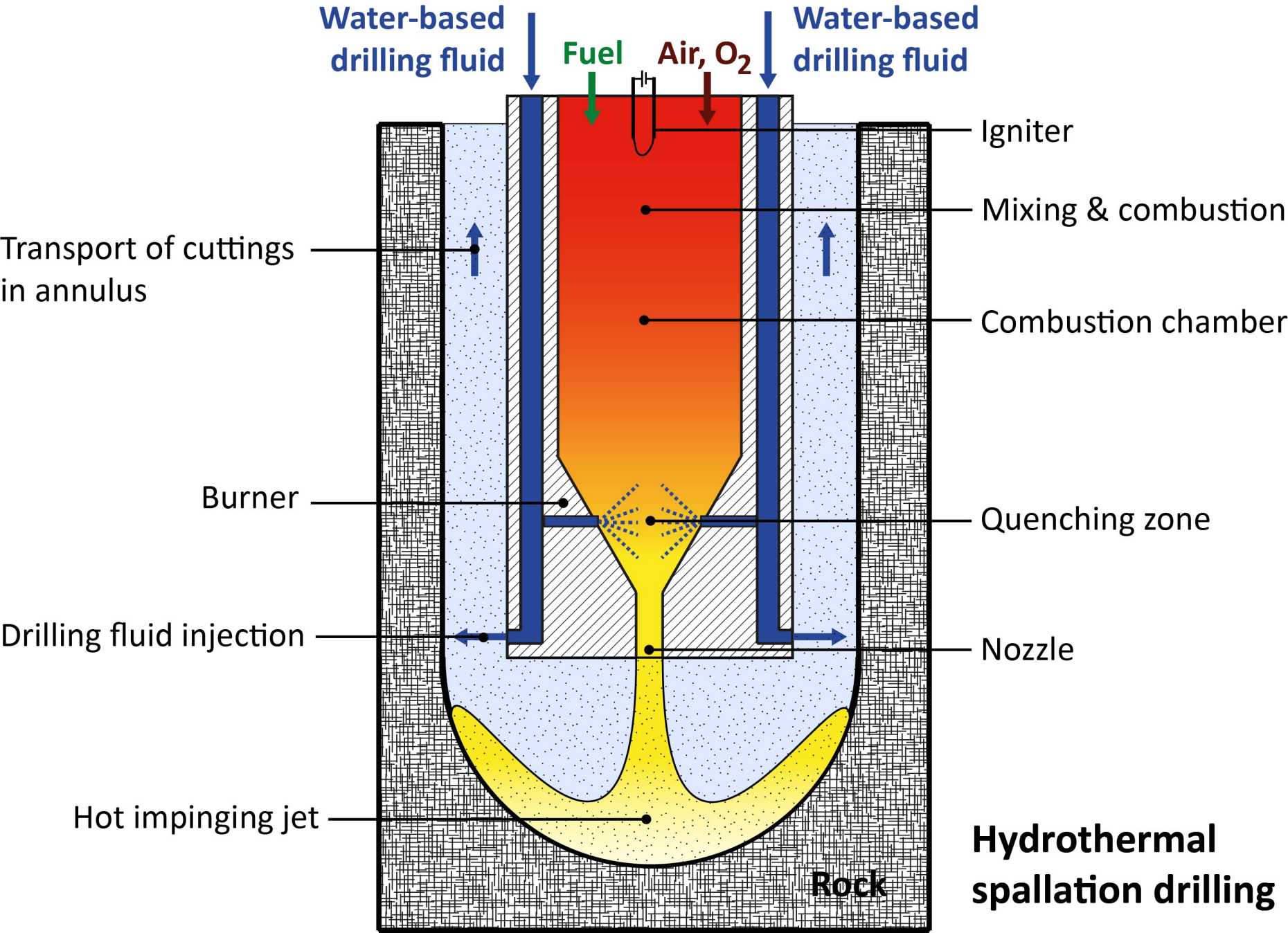Spallation Drilling
For the production of electricity out of geothermal energy, deep wells (4 – 6 km) have to be drilled with conventional rotary drilling methods in abrasive and hard rock environments. Wear of the drilling head under these demanding conditions and therefore the required frequent replacement results in expensive trip times during drilling. The costs associated with drilling represent the major part of the costs (up to 70%) for the construction of a geothermal power plant. A possibility to make deep geothermal energy competitive with respect to other sources of energy is the reduction of drilling costs.
“Thermal spallation drilling” (ambient) is known as a promising technology for drilling shallow wells in hard rock formations at ambient pressure. This drilling approach is based on the characteristics of certain rock types to disintegrate continuously into small flakes when exposed to the high thermal loads of an impinging flame jet. Enhanced drilling velocities and less wear of the drilling head are expected as major advantages that finally contribute to reduction of drilling costs. The fluid-side heat transfer coefficient between impinging flame jet and rock was identified as curial parameter in the drilling process. In our experimental setups for ambient spallation drilling, we primarily focus on the characterization of heat transfer phenomena of impinging flame jets and on the investigation of the mechanisms of thermal rock fragmentation.
Nevertheless, for drilling wells of several kilometers depth, a water-based drilling fluid is essentially required for fulfilling several important tasks in the drilling process, e.g. removal of rock cuttings. In water filled boreholes at certain depth, the pressure exceeds the critical pressure of water (220.64 bar) and therefore, hydrothermal flames are favored to provide the required heat for thermal rock fragmentation. Heat and momentum transfer of the hot impinging jet towards rock are identified as crucial parameters in the drilling process. In transferring “ambient” spallation drilling into a technology at depth (“hydrothermal spallation drilling”), several challenges have to be tacked like entrainment of cold surrounding drilling fluid, ignition and combustion in an aqueous environment and the optimization of heat transfer to rock. Within our hydrothermal spallation drilling pilot plant, it is possible to simulate realistic fluid-dynamic, temperature and pressure conditions as found downhole in deep wells. Finally, the feasibility receptively the proof of concept for hydrothermal spallation drilling will be shown by means of experiments in this pilot plant. The focus in this project is primarily the design of a hydrothermal burner, heat transfer characterization under supercritical conditions of water and the development of heat flux sensor devices applicable under the challenging downhole conditions.
Keywords:
spallation drilling, hydrothermal spallation drilling, impinging jet, heat transfer, thermal rock fragmentation, heat flux sensor, hydrothermal flame

